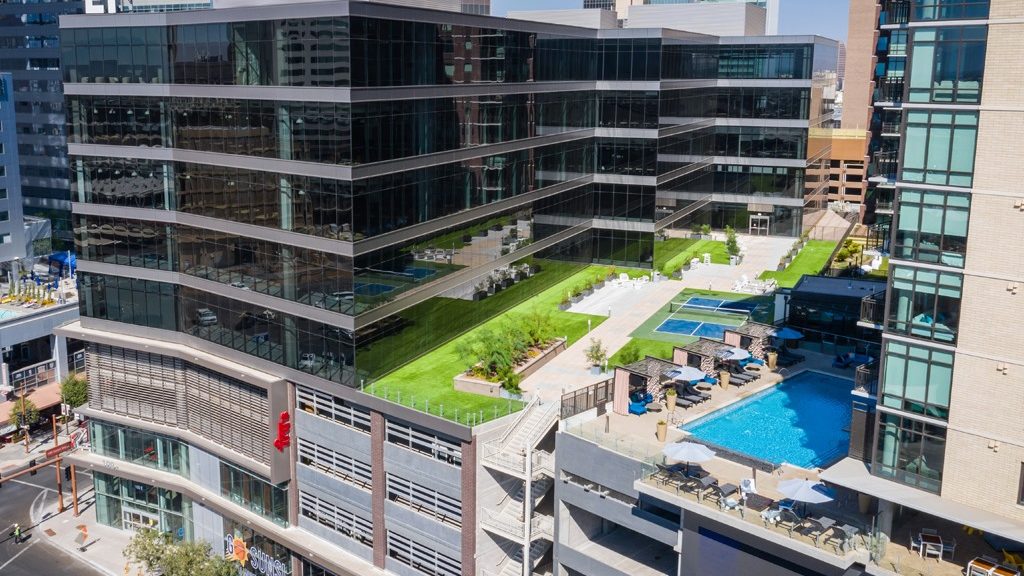16 years ago, Catherine Ivy’s husband woke up one day with numbness in his thumb.
At first he thought it was just a herniated disc. But then he lost the feeling in his tongue. He got nervous.
A CT scan of his head revealed a tumor. He was quickly and unexpectedly diagnosed with glioblastoma, a deadly form of brain tumor. 72 hours after the CT scan, the doctors operated on his brain.
“When he got sick, we were just preoccupied with saving his life,” said Ivy. “But it wrecks you pretty quickly. Your life just turns upside down. You must immediately start other procedures that are affecting your quality of life. And then you come home. “
The couple got married anyway. If anything happened to him, they decided that Catherine would set up a foundation to find a cure. He died in November, four months after they got married. A year later, Ivy founded the Ben and Catherine Ivy Foundation. Ivy gradually began selling the real estate company he founded and ran and transferred the funds to the foundation.
In the three years since it opened, the Ivy Foundation-supported Ivy Brain Tumor Center at the Barrow Neurological Institute has screened and treated more than 1,000 patients, recruited more than 40 full-time scientists, investigators and operations staff, worked with more than 25 biopharmaceutical companies and opened 11 new clinical trials. The foundation has allocated more than $ 132 million to brain cancer research since 2005, according to its website.
Now the Ben and Catherine Ivy Foundation, together with the Barrow Neurological Institute, is inaugurating a new headquarters in downtown Phoenix.
Construction should start next month.
The 75,000 square meter, five-story building will be the world’s largest translational research center for the development of drugs against brain tumors. Its location is adjacent to the Dignity Health St. Joseph’s Hospital and Medical Center campuses on Thomas Road and 3rd Avenue. The work should be completed in 2023.
The center will specifically target glioblastoma. While glioblastoma is considered one of the deadliest forms of brain tumors – with an average survival rate of 15 months – it is also rare, with only about 18,000 new diagnoses per year. High profile Sens. John McCain, R-Ariz., And Edward Kennedy, D-Mass., Died of the disease.
The center will move from the three buildings on the campus of Dignity Health St. Joseph’s Hospital and Medical Center to the new headquarters, the “30,000 square meters of wet laboratory space, 14,000 square meters for the experimental infrastructure, 7,000 square meters for multidisciplinary clinical advice, an MR-guided ultrasound suite and a video teleconferencing auditorium, ”reads a press release.
The building was announced on July 21, Glioblastoma Awareness Day.
As a former financial planner, Ivy takes care of the foundation’s commercial affairs, but does not pay any attention to whether the building is generating financial returns.
“I just want to help find a cure,” said Ivy. Ivy said her husband knew that she “would do the right thing for the right reason.”
“He trusted me,” said Ivy. “And he knew my work ethic and he knew my character. And it’s something I say a lot, you know, it’s not about me, and it’s not about us, it’s about them. It’s about the patient. “
Her husband’s death is why Ivy pledged to find a cure for brain cancer.
“His suffering and our sudden awareness of the lack of opportunities to fight this disease motivated me to find better diagnostics and develop therapies to alleviate the debilitating effects that patients with brain tumors have to endure,” the website says the Ben and Catherine Ivy Foundation. Fighting the disease means finding the second FDA-approved drug to help cure brain cancer.
“It’s a very ambitious goal, but we think it’s achievable,” said Ivy.
Nader Sanai, director of the Ivy Brain Tumor Center, is also searching for a cure for glioblastoma largely because of his personal experience. His cousin and aunt died of glioblastoma about two and 20 years ago, respectively.
It is difficult, Sanai said, “to see them go through the fight, to watch their doctors try to help us, to watch them go through failed clinical trials.”
“These two events are a couple of decades apart, but their experiences were very, very similar, which suggests how little progress has been made in this area over the years,” said Sanai.
Sanai, a neurosurgical oncologist at the Barrow Neurological Institute for 10 years, are the glioblastoma patients he has tried to treat.
“They go through incredibly stressful moments in life, in many cases lose these battles and just stand shoulder to shoulder with them, trying to make it through and working with their families to get to know their families one at a time,” said Sanai .
Sanai is conducting clinical trials with a design called “Phase 0”. Usually, doctors inject patients with an experimental drug and wait months for a result. But phase 0 enables doctors to be more willing to experiment: They try to compare the tumor biology of the respective patient with a drug or a combination of drugs.
“If you’re in a clinical trial at the Ivy Center and you get a long-term drug, there is a reason,” said Sanai. “Because we have evidence that this drug does something that gets to your tumor, that it hits its target.”
Last March, Ian Youngblood helped the coronavirus surge in New York City, running community hotels and temporary facilities that housed patients with COVID-19 who were discharged from the emergency room.
One morning Youngblood woke up with a neck pain and a racing headache. When he left his home, he vomited. A CT scan of his head revealed that he had a mass in the frontal lobe. He was supposed to have an operation the next day in a hospital out of town. Surgeons removed 80-90% of the tumor. When Youngblood woke up, he learned that he had been diagnosed with glioblastoma.
He flew from New York to Phoenix, where he began nursing at the Barrows Neurological Institute near Sanai. More than a year later, Youngblood said Sanai and the Barrows Neurological Institute were “extremely helpful”.
Youngblood noted that when he suddenly realized that “life is precious”, he found solace in the little things like family and travel. Talking about the disease, he said, makes him cry. But the new center helps and serves as a kind of silver lining for yourself and others diagnosed with glioblastoma.
“I think it’s critical,” said Youngblood. “I’ve told several people this: The positive side of my diagnosis is that one day I’ll be able to help someone else. … With this five story building being built, the doctors are trying their best to learn as much as possible about the process of what it takes to deal with the entire disease that nobody knows is. You keep pushing the boundaries. “
Subscribe to azcentral.com today to support local journalism.
[ad_2]













